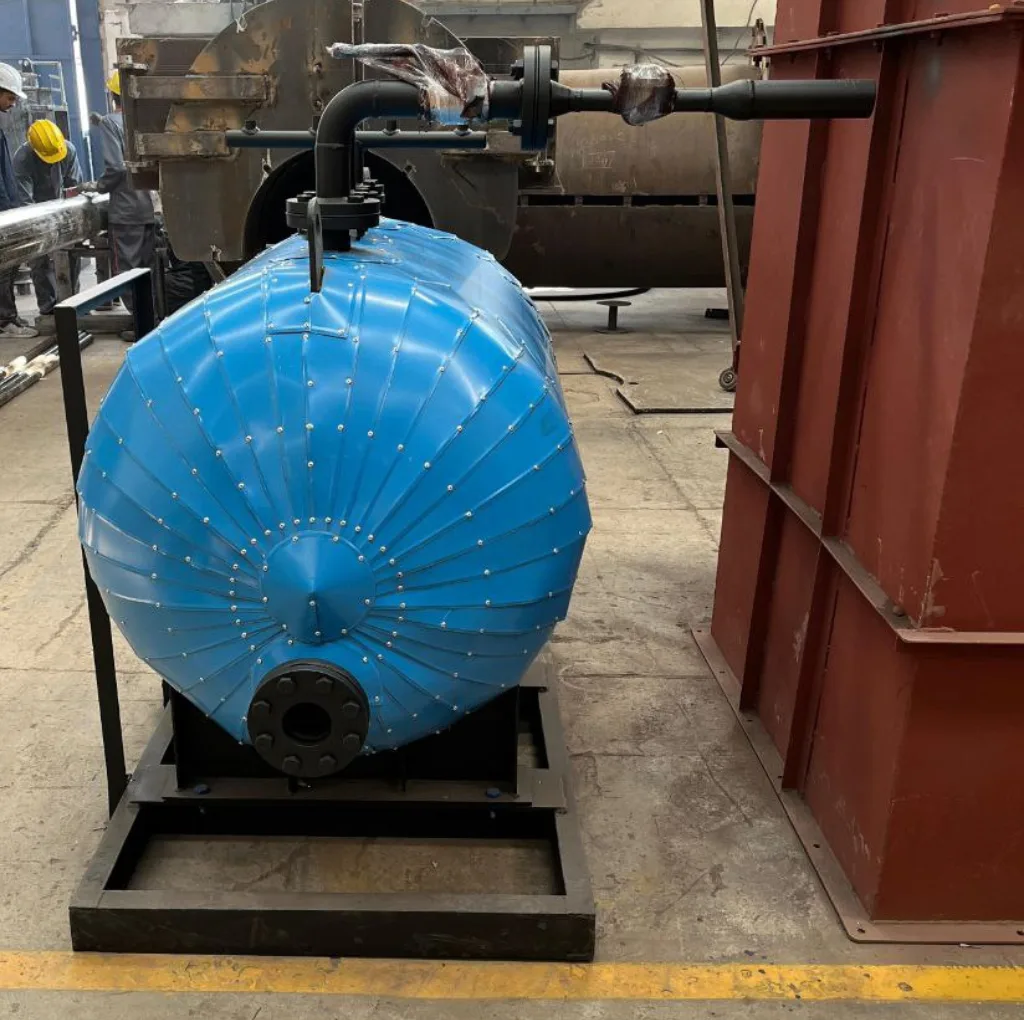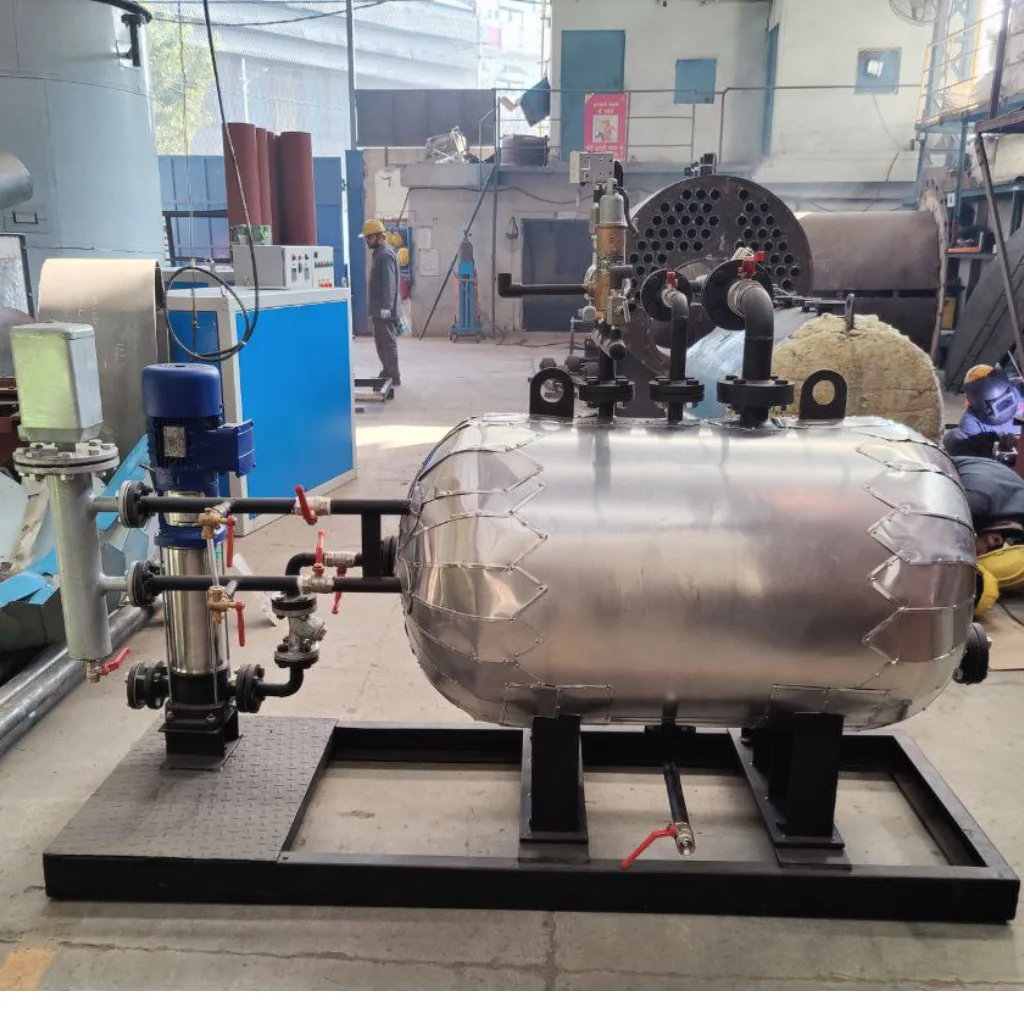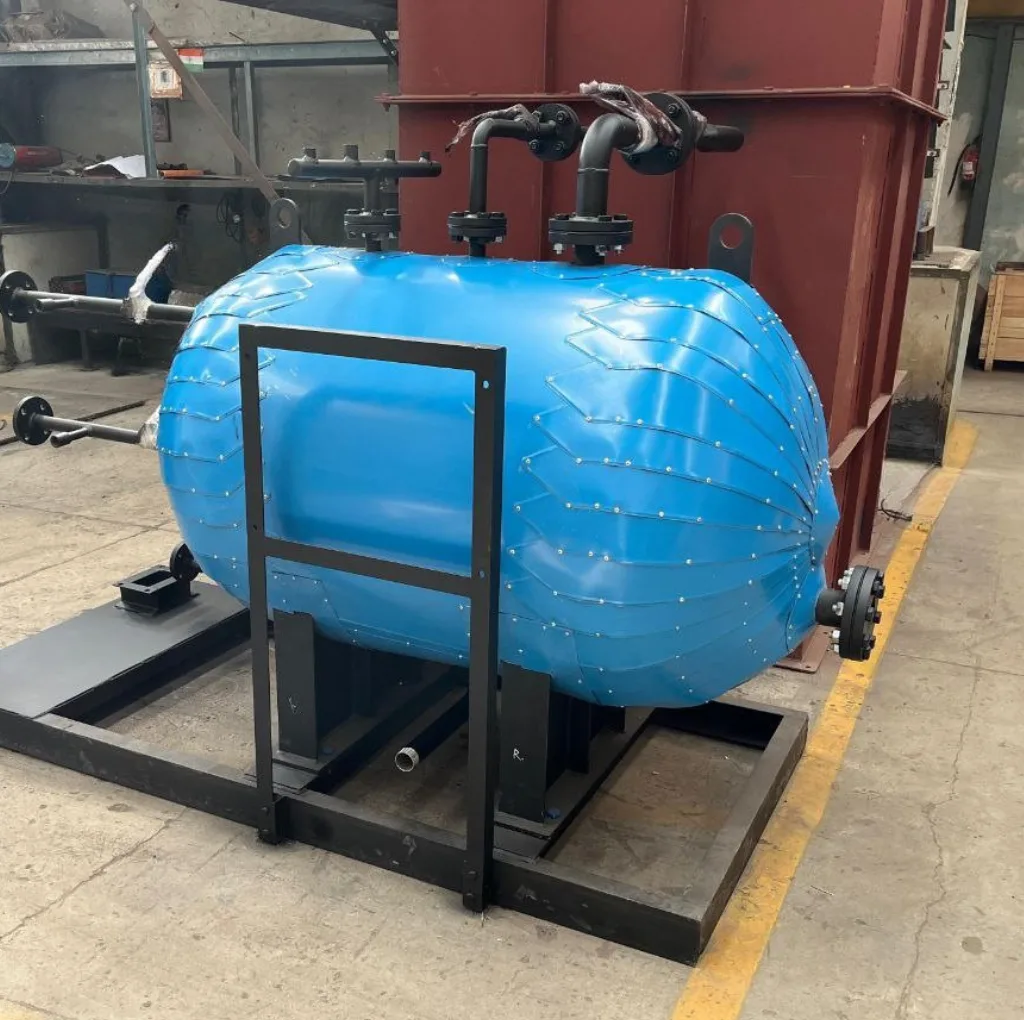PRESSURISED CONDENSATE RECOVERY MODULE
PRESSURISED CONDENSATE RECOVERY MODULE
Pressurized condensate recovery is designed to collect steam or condensate from the industrial processes and return it to the boiler under pressure. This method preserves the thermal energy within the condensate, minimizing energy loss and drastically increasing overall thermal efficiency of the boiler system.
In a traditional – non pressurized condensate recovery system, the condensate is cooled and then returned at atmospheric pressure, which results in significant energy wastage.
Our PCRM can be your boiler’s best friend by improving boiler operations by reducing fuel consumption, increasing energy efficiency, and enhancing overall system performance.
ADVANTAGES
ADVANTAGES
- Excellent return on investments
- No Flash Steam loss
- Minimal make-up water requirement
- An increased steam output of the existing boiler
- Reduced water treatment cost for make-up water
- Reduced fuel consumption due to high feed water temperature




